Care homes urged to run dance classes after they were found to calm dementia patients
An academic is calling for all care homes to run structured and regular dance sessions after she found a popular dance from the streets of Mexico helped to calm dementia patients when they were agitated.
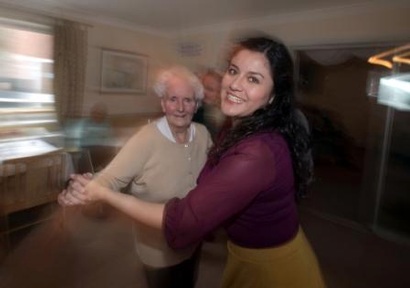
Her research revealed dancing improves mood, is good for physical wellbeing and also helps to strengthen the bond of trust between staff and residents.
Care homes are increasingly being encouraged to use therapies such as psychomotor intervention (using activities requiring physical and mental skills) and cognitive stimulation to reduce the use of antipsychotic medication.
Dr Azucena Guzmán García used a simple-to-follow Latin ballroom style dance called Danzón, in care homes in Tyneside as part of her PhD research at Newcastle University.
Residents were introduced to some simple steps allowing them to dance together to uplifting Danzón music. The lessons brought together cognitive, behavioural and emotional functions and also enabled residents to enjoy the music and the social interaction.
Dr Guzmán García, who now works at the Dementia Research Centre, North East London NHS Foundation Trust, said: “While dancing is often considered entertainment in care homes, I believe that it can be useful practice. I found that these dance classes helped calm agitation and improved mood and quality of life for people with dementia. There are also obvious advantages in terms of physical fitness.
“I witnessed the joy people got from taking part in the dancing and for residents who were watching, the laughter and happy memories it generated.”
She would like to see all care homes running “structured and regular dance sessions because of the benefits it brings in terms of behaviour and social interaction which means it can be considered positive for dementia care”.
Professor Martin Orrell, an expert in dementia care research at UCL's Mental Health Sciences Unit said there is an “urgent need for further investment in this type of dementia care research”, following Dr Guzmán García’ study. He added: “This important study shows that using dance in dementia care by combining both enjoyable music and physical activity may have benefits to both mood and physical wellbeing.”
Originating in England in the 17th Century, the Danzon style was popular during Jane Austen’s era before being taken to France. After that it moved to Haiti and then Cuba. It still survives in Mexico where it can be seen enjoyed on the streets in impromptu dances especially by older adults.
For the study called ‘Introducing a Latin ballroom dance class to people with dementia living in care homes’ Dr Guzmán García designed a programme with each dance session lasting approximately 30 minutes and involving a warm-up, Danzón practice, free-style dancing and a cool down.
Staff at Tyneside care homes were trained to lead sessions so the dancing could continue after the end of the study.
The dance classes were trialled at Rosewood Villa Residential Home in Throckley, Newcastle, and staff found there was a noticeable improvement in socialising and interaction.
Proprietor Mary Watson said: “We could see how much people enjoyed the dancing and it brought back some lovely memories which they were able to share with us of when they were younger.
“We found that the men wanted to join in with the dancing and this is important to us as it can be harder to find activities that they want to take part in. On the days when the dancing was on, the men made an effort to dress smartly and told us how they were looking forward to it which was really nice.”
Dr Ian James, head of challenging behaviour within the Newcastle Hospitals NHS Foundation Trust, who helped carry out the study which was published in the Dementia Journal of Social Science and Practice commented: “The Danzón activity was enjoyed by both the residents and staff and improved the communication between the two groups. Reductions in residents' agitation and apathy were also seen, which is noteworthy because often these conditions are treated with medications known to have highly problematic side-effects.”
Staff also found dancing improved the trust between residents and themselves, was a means for acceptable social touch and improved communication to the extent that staff were able to reduce a resident’s anxiety by having a “little Danzón dance in the corridor” outside the sessions.
Ninety-year-old Ada, who took part in the classes Rosewood Villa Residential Home for the Elderly in Throckley, Newcastle said: “It makes me feel happy. When you hear the music it makes you start to move and makes you feel good. It’s lovely, it makes you feel better and I look forward to the classes.”
Jack, 88, pictured dancing with Hilda, explained: “It’s good to dance and join in. I danced years ago with my wife and being able to do it again is great.”
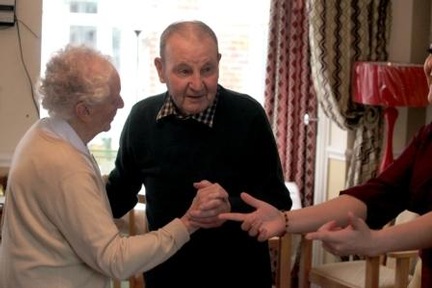
“I enjoy everything about the dancing” said Hilda, 91. “I was the youngest of a large family and most of us danced. I love dancing - I met my husband dancing and he was very good – it brings back happy memories.” Another resident said: “‘I just think that it’s a different thing as we usually do games, bingo, puzzles, we never had dancing really. So, it was something nice, a different thing, fun! It was good; it was nice to go around dancing, instead of sitting down on the chair.’ While another said: “If you are feeling miserable and you dance, it cheers you up.”
Queen Margaret University in Edinburgh has been running a similar project with its dance movement psychotherapy students using dance therapy with care home residents.
Dr Vicky Karkou, programme leader for the university’s MSc in Dance Movement Psychotherapy, found the initiative enabled “residents, some, for the first time, to explore their emotional difficulties through movement”.
Mike Heard, practice supervisor,added that the presence of the students in the care home benefited not only the residents but also care home staff. He said: “In a care home, staff are not always aware of the psychological needs of the residents. Dance movement psychotherapy helped to bring the setting a new awareness of the psychological needs of the residents rather than focusing only on physical disabilities”. Some care homes are already aware of the beneficial impact dancing can have and run regular classes.
Roseland Parc in Tregony, near Truro in Cornwall, puts on Zumba classes for its residents.
Zumba instructor Clare Lawrence, said: “It’s less about focusing on one particular routine and more about simply encouraging people to get moving. I try to make the classes a very rounded experience. The music is chosen to jog memories and sometimes I’ll add in a tango move or a little cha-cha shimmy which many residents are familiar with.” While some residents are able to carry out relatively complicated movements, even those with limited mobility are encouraged to take part in the classes.
“The benefit of the classes is that everyone can do as much or as little as they can manage. Anything that gets the blood pumping and generates a smile is a good thing,” she added.
At Pendine Park care home in Wrexham, Wales, residents ditched their weekly tea dance for belly dancing.
Professional belly dancer, Fatma, came in and showed residents how to gyrate.
Susie Owen, the activities coordinator at the Highfield care home, said: “It was colourful and hugely entertaining and clearly many residents thoroughly enjoyed the performance. “It was also nice to see those residents who wanted to join in up and involved and dressing up too. They thoroughly enjoyed themselves and learnt a great deal about a different culture too.”
Dr Guzmán García wants to build up “evidence-based practice of dance work as a non-pharmacological intervention for older people with dementia to improve their quality of life”.
She and Professor Martin Orrell, want to recruit ‘pro-dancing care homes’ willing to run regular dancing sessions at their settings.
For further information on her research, email Azucena.GuzmanGarcia@nelft.nhs.uk or follow her on Twitter: @Dancementia
Latest Features News
 25-Nov-19
2019 Election: Boris Johnson leaves social care in 'too difficult box' but Labour vows to end 'crisis'
25-Nov-19
2019 Election: Boris Johnson leaves social care in 'too difficult box' but Labour vows to end 'crisis'
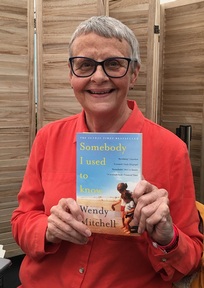 18-Oct-19
Podcast: Wendy Mitchell and dementia: 'My biggest fear is not knowing who my daughters are'
18-Oct-19
Podcast: Wendy Mitchell and dementia: 'My biggest fear is not knowing who my daughters are'
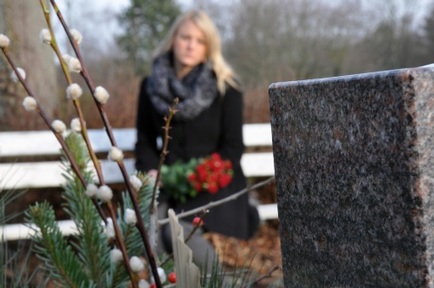 27-Sep-19
Exclusive: Care minister backs care workers' call for time off to grieve and attend funerals
27-Sep-19
Exclusive: Care minister backs care workers' call for time off to grieve and attend funerals
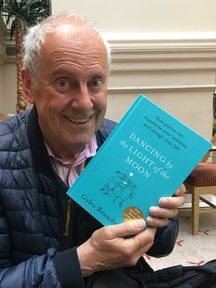 19-Sep-19
Podcast: Gyles Brandreth says poetry helps ward off dementia
19-Sep-19
Podcast: Gyles Brandreth says poetry helps ward off dementia
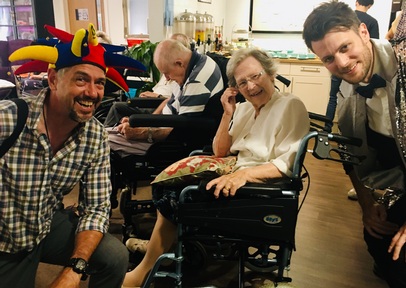 30-Aug-19
Edinburgh Fringe funnyman joins comics facing toughest audience at care home gig
30-Aug-19
Edinburgh Fringe funnyman joins comics facing toughest audience at care home gig